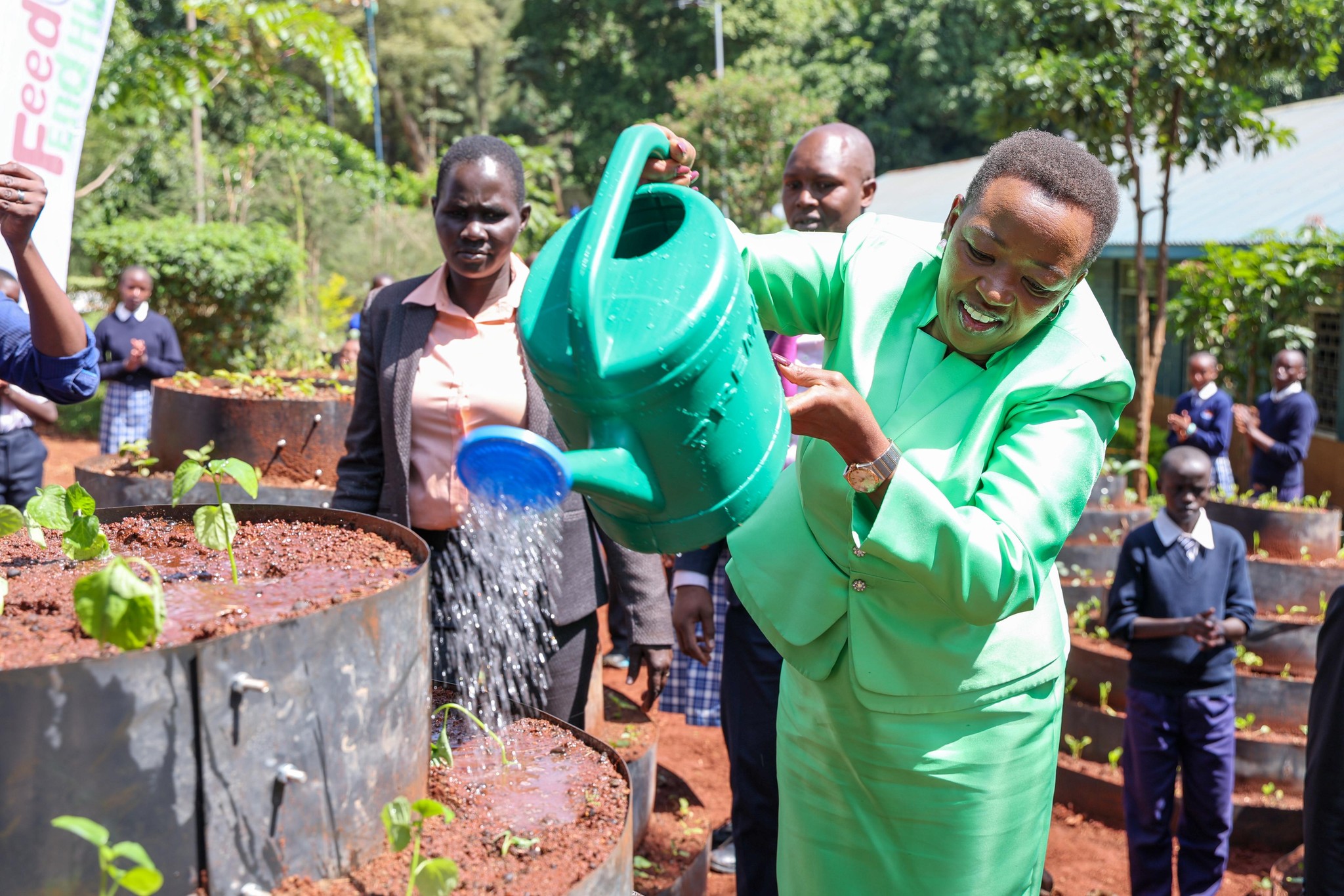
This morning at Farasi Lane Primary School, a special side event was held during the UN-Habitat Assembly to highlight the MaMa Kitchen Garden initiative.
Spearheaded by Kenya’s First Lady, Mama Rachel Ruto, the initiative offers a simple yet powerful solution to urban food insecurity by teaching families and schools how to grow their own food, even in the smallest of spaces.
A Simple Idea with a Big Impact
The MaMa Kitchen Garden (short for Make and Maintain Agriculture) was designed to provide practical, low-cost, and easy-to-implement gardening techniques for urban residents. Recognizing that access to fresh, nutritious food is often a challenge in densely populated cities, this initiative offers a lifeline to families and schools navigating rising food prices and shrinking green spaces.
From vertical gardens made of recycled containers to sack gardening and compact hydroponic systems, the methods showcased at Farasi Lane Primary demonstrate that you don’t need acres of land to feed a household or a classroom—you just need creativity, commitment, and community support.
Why Urban Agriculture Matters
As cities continue to expand, urbanization brings undeniable advantages—greater access to services, jobs, and innovation. But it also brings with it some pressing social and environmental challenges. Key among them is urban food insecurity, particularly in informal settlements and under-resourced communities.
In many of our towns and cities, access to affordable, nutritious food is inconsistent. This disproportionately affects vulnerable groups, especially children. The food they eat—or don’t eat—has a direct influence on their physical growth, brain development, classroom performance, and overall well-being.
That’s why the MaMa Kitchen Garden is about more than just planting seeds in soil—it’s about planting the foundations of healthier futures.
Teaching by Growing
By integrating kitchen gardens into the school environment, we’re also transforming how students learn. These green spaces serve as living classrooms, where children don’t just learn about science, math, and agriculture—they experience them firsthand. They observe the lifecycle of a plant, understand the importance of nutrition, and gain valuable lessons in sustainability and environmental responsibility.
At Farasi Lane, students proudly displayed their thriving gardens, showcasing everything from kale and spinach to tomatoes and onions—all grown in containers tucked into corners of their school compound. For many of them, this is their first encounter with hands-on food production, and the pride on their faces said it all.
A Collaborative, Scalable Model
The event also highlighted the importance of collaboration across sectors—from education and agriculture to urban planning and environmental health. Partners from government, civil society, and the private sector came together to explore how the MaMa Kitchen Garden model can be scaled and replicated across Kenya and beyond, adapting to different urban settings and cultural contexts.
What makes the initiative truly powerful is its adaptability. Whether in a high-rise apartment, a peri-urban schoolyard, or a community center, MaMa Gardens can take root and thrive—bringing food closer to the people who need it most.
Reimagining Cities for People and the Planet
As part of a broader commitment to climate resilience and sustainable urban development, the MaMa Kitchen Garden initiative represents a shift in how we think about city spaces. It challenges the notion that urban life must be disconnected from nature and encourages us to reclaim our concrete environments for growth, nourishment, and healing.
By turning backyards, balconies, rooftops, and schoolyards into green spaces, the initiative aims to not only improve nutrition but also strengthen social bonds, boost mental health, and contribute to climate-smart communities.






